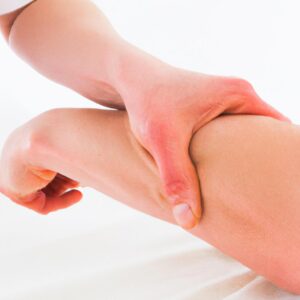**”The Role of Plyometric Training in Obstacle Course Success: Enhancing Power and Agility for Challenging Terrain”**
# The Role of Plyometric Training in Obstacle Course Success: Enhancing Power and Agility for Challenging Terrain
Obstacle course racing (OCR) has surged in popularity over the past decade, captivating fitness enthusiasts and athletes alike. The unique combination of running, climbing, jumping, and crawling demands a high level of power, agility, and stamina. One of the most effective training methodologies that can enhance performance in these challenging environments is plyometric training. This blog post will explore the significance of plyometric training in developing the necessary physical attributes required for obstacle course success, providing insights into nutrition, exercise advice, and health benefits.
## Understanding Plyometric Training
### What is Plyometric Training?
Plyometric training, often referred to as “jump training,” involves explosive movements designed to develop strength and power. These exercises utilize the stretch-shortening cycle of muscles, allowing athletes to produce maximum force in minimal time. Common plyometric exercises include box jumps, depth jumps, and bounding, all of which can significantly enhance athletic performance.
### Why Plyometrics Matter for Obstacle Courses
The dynamic nature of obstacle courses requires participants to navigate various terrains and overcome physical barriers. Plyometric training instills the necessary strength and agility to perform explosive movements, which are essential for jumping over obstacles, sprinting across uneven ground, and transitioning quickly between different challenges.
## Nutrition Tips for Optimal Performance
Proper nutrition is crucial for athletes, especially those training for demanding events like obstacle courses. The right nutrients can enhance performance, recovery, and overall health.
### Pre-Workout Fuel
Before engaging in plyometric training or an obstacle course, it’s essential to fuel your body adequately. Focus on carbohydrates to provide quick energy, paired with a moderate amount of protein. A pre-workout meal or snack could consist of a banana with almond butter or a smoothie made from fruits and Greek yogurt.
### Post-Workout Recovery
After intense training, your body needs to recover. Consuming a meal rich in protein and carbohydrates within 30 minutes of completing your workout can help replenish glycogen stores and repair muscle tissues. Consider options like grilled chicken with quinoa and vegetables or a protein shake with a piece of fruit.
### Hydration
Staying hydrated is vital, especially when engaging in high-intensity workouts. Dehydration can lead to decreased performance and increased injury risk. Aim to drink water before, during, and after your workouts, and consider electrolyte-rich drinks if you train for extended periods.
## Exercise Advice for Incorporating Plyometrics
To effectively enhance your power and agility through plyometric training, follow these guidelines:
### Start Gradually
If you’re new to plyometrics, begin with basic exercises to build your foundation. Exercises like squat jumps and lateral bounds are great starting points. Focus on form and control to prevent injuries.
### Frequency and Intensity
Incorporate plyometric sessions into your training routine 1-3 times per week, allowing adequate recovery time between sessions. As you become more comfortable, gradually increase the intensity and complexity of your exercises.
### Combine with Other Training Modalities
Plyometrics should complement other forms of training, such as strength training and endurance workouts. This combination will ensure a well-rounded fitness approach, preparing you for the diverse challenges of an obstacle course.
## Health Benefits of Plyometric Training
Engaging in plyometric training not only enhances performance but also offers various health benefits:
### Improved Muscle Strength and Power
Plyometric exercises recruit fast-twitch muscle fibers, leading to increased muscle strength and explosive power, which are crucial for overcoming obstacles.
### Enhanced Agility and Coordination
The quick, dynamic movements involved in plyometrics improve coordination and agility, enabling better navigation through complex terrains during races.
### Boosted Cardiovascular Fitness
Plyometric training is often high-intensity and can elevate heart rates, contributing to improved cardiovascular fitness and endurance, essential for long-distance obstacle courses.
### Injury Prevention
Strengthening muscles, tendons, and ligaments through plyometric training can reduce the risk of injuries. Improved balance and coordination also contribute to better body control, further minimizing injury risk during races.
## Conclusion
Incorporating plyometric training into your workout routine can significantly enhance your performance in obstacle course racing by developing the power, agility, and coordination needed to conquer challenging terrains. Coupled with proper nutrition and a well-rounded training regimen, plyometrics can help you achieve your OCR goals while reaping additional health benefits. By focusing on explosive movements, you will not only bolster your physical capabilities but also enjoy a more rewarding and successful experience in the thrilling world of obstacle course racing.















Post Comment